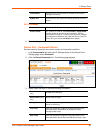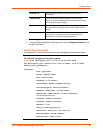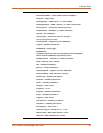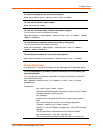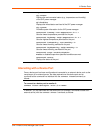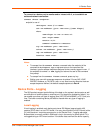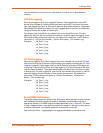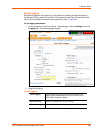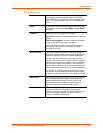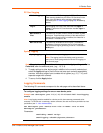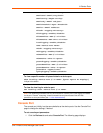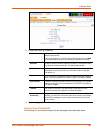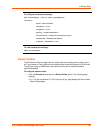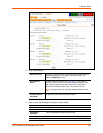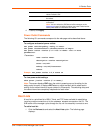
8: Device Ports
SLB™ Branch Office Manager User Guide 101
Email/SNMP Traps
Email/Traps
Select the checkbox to enable email and SNMP logging.
Email logging sends an email message to pre-defined
email addresses or an SNMP trap to the designated NMS
(see 7: Services) when alert criteria are met. Disabled by
default.
Send
If you enabled email and SNMP logging, select what type
of notification log to send: Email, SNMP, or Both. Email is
the default.
Trigger on
Select the method of triggering a notification:
Byte Count: A specific number of bytes of data. This is the
default.
Text String Recognition: A specific pattern of characters,
which you can define by a regular expression.
Note: Text string recognition may negatively impact the
SLB device’s performance, particularly when regular
expressions are used.
Byte Threshold
The number of bytes of data the port receives before the
SLB branch office manager captures log data and sends a
notification regarding this port. The default is 100 bytes.
In most cases, the console port of your device does not
send any data unless there is an alarm condition. After the
SLB device receives a small number of bytes, it perceives
that your device needs some attention. The SLB branch
office manager notifies your technician when that point has
been passed, and the notification includes the logged data.
For example, a threshold preset at 30 characters means
that as soon as the SLB device receives 30 bytes of data,
it captures log data and sends an email regarding this port.
Email Delay
A time limit of how long (in seconds), after the SLB branch
office manager detects the trigger, that the device port
captures data before closing the log file (with a fixed
internal buffer maximum capacity of 1500 bytes) and
sending a notification. The default is 60 seconds.
Restart Delay
The number of seconds for the period after the notification
has been sent during which the device port ignores
additional characters received. The data is simply ignored
and does not trigger additional alarms until this time
elapses. The default is 60 seconds.



